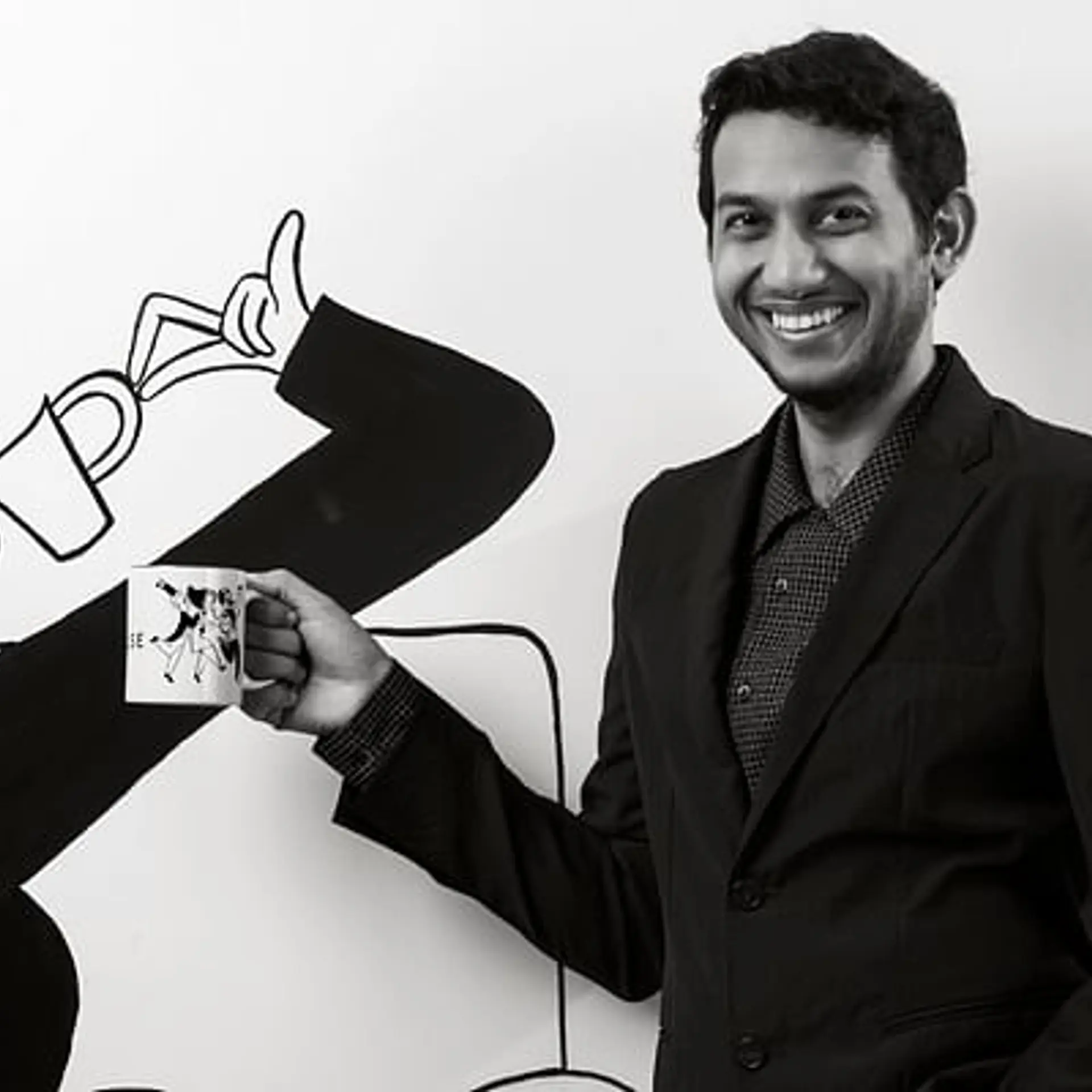Ayurveda startup AyuRythm is using tech to offer personalised wellness solution to users
AyuRythm is a digital personalised wellness solution based on the principles of Ayurveda. The Bengaluru startup is using technology to make Ayurveda easily accessible and personalised to people.
Ramanath Padmanabhan, Sandeep Acharya, and Abhilesh Gupta were not just neighbours but also shared a common interest in activities like cricket, running, and golf. They noticed there was a large group of people who aspired to look good and stay fit, but hated calorie counting and bodybuilding.
It was then they thought of looking at natural ways of staying healthy and fit. They looked at Ayurveda and wellness segment and realised it is based on simple dos and don’ts.

Founders of AyuRythm
This led them to start , a digital personalised wellness solution based on the principles of Ayurveda. The startup is based out of Bengaluru and was founded last year.
Ramanath explains, even though holistic wellness methods like Ayurveda are well developed and offer personalised solutions, it still requires an expert to assess the state of individual and offer customised solutions. The product currently is in its pre-revenue stages.
The product and challenges
According to the founders, one of the challenges of scaling the product – the AyuRythm app - was lack of technology driven objective measures to assess the holistic wellness state of the individual, which varies from morning to night, season to season, as well as day to day.
Ramanath says, “AyuRythm has solved this issue with an easy-to-use and accessible digital mobile platform. The registered users need to answer 30 questions one time and take 30 seconds pulse diagnostic test using their smartphone camera. The users’ holistic wellness state is analysed and solutions combining yoga, breathing exercise, meditation, food, and herbal remedies are suggested. The more tests the user takes, the system can track more of their holistic wellness variation, and offer a personalised solution,” explains Ramanath.
The pulse diagnostic test measures the blood flow using the smartphone camera basis finger photo plethysmography principles.
He says, from the signal we compute seven vital signs namely heart rate, rhythm, systolic BP, diastolic BP, pulse pressure, arterial stiffness, and pulse morphology, and then correlate these vital signs to Ayurvedic biomarkers. This is then used to calculate bodily humours namely vata, kapha, and pitta, which form the holistic wellness index.

Founders of AyuRythm
Merging Ayurveda and tech
Automating the Ayurveda space was not as easy for the startup. Ramanath explains, the consumers lacked high quality curated and step-by-step instructions every time they wanted it.
Apart from this, Ayurvedic wellness is based on the concepts of Prakriti and Vikriti.
“Prakriti is the inherent balance of Kapha, Pitta, and Vata dosha of an individual, and Vikriti is the current body imbalance of the same doshas. Prakriti is assessed by a physician through a series of questions, and Vikriti is assessed though visual analysis of body features as well as Naadi Pariksha (pulse diagnostics). Pulse diagnosis in Ayurveda is done manually with the physician placing fingers on radial artery and making a subjective assessment of several vital signs. Being expertise dependent, it is prone to intra and inter physical variability. Automating this was a huge challenge,” explains Ramanath.
The team could solve this issue with the help of an extended team of signal processing and AI/ML experts. The team is now of 10 people.
Ramanath is also a healthcare strategist and alumnus of IIT Mumbai. The other co-founders have close to two decades of experience in various corporate and technology leadership roles.
The team has built sets of algorithms to asses Prakriti through a differential diagnosis questionnaire and Vikriti using smartphone camera or wearable sensors.
With extensive help from evangelists and UI/UX engineers from Apple accelerator, the mobile app was designed. The team continues to have knowledge sessions with Apple team at their accelerator and benefits through several iterations to create a good product for excellent user experience.
“With this, anyone having a smartphone combined with AyuRythm application could access high quality curated content as well as personalised Ayurvedic coaching. Recent advances in wearable technology has enabled us to investigate vital parameters in more detail, e.g. Apple watch. AyuRythm leverages this with age-old holistic and proactive health sciences of Ayurveda,” explains Ramnath.
The client base
The team showcased the app through mobile phones and wearable devices at Ayurvedic hospitals, government bodies, Ayurvedic pharmacies, and healthcare non-profits.
Small scale validation (50+ users) with SVAYASA ( Swami Vivekananda Institute of Yoga and Siddha, a deemed to be university from Bengaluru), Niraamaya Resort, and Dr Vaidyas also proved the technology feasibility.
As a next step, the team is in discussion with leading Ayurvedic research institutes for large scale validation. With the Department for Promotion of Industry and Internal Trade (DPIIT) support, four patents have been filed around the core technology and is waiting for approval.
“Our one of its kind AyuSeeds rewards programme will allow users to interact and unlock premium features on the app. It will also allow them to redeem these rewards against purchases in future. The search feature in the application gives one-click access to quickly find solutions for their health condition or understand the benefits of food, yoga, mudra, kriya, meditation or pranayama,” says Ramnath.
The users can create their own exercise or diet regimen by creating their custom list and can share it with their family and friends.
Business model and market
AyuRythm primarily operates in the B2C space. It offers freemium content and services as well as gets commissions when the consumer purchases a product. The team is now in pre-revenue stages.
Apart from this, it claims to have become an affiliate partner to market its ayurvedic products to companies like Dr Vaidyas and Herbal Hills. The team also plans to onboard several product vendors on to the platform.
It is also ready to launch online yoga and meditation plans in partnership with reputed healers from India and abroad. Apart from this, premium and paid content to self-learn Ayurveda, yoga, and meditation will be made available on the platform from this month.
The wellness and healthcare segment is fast growing, and startups like Pooja Bedi’s Happy Soul, Pankaj Chaddah’s Mindhouse, and even Curefit are looking closely not just at Yoga and wellness but also alternate forms of medicine.
According to a FICCI report, as per a recent study by the Stanford Research Institute International, the global wellness industry presents a market of nearly $2 trillion as opposed to the Indian wellness industry, which is a $9.8 billion market.
AyuRythm has raised seed investment from Anthill ventures as of now. The team is also a part of Ministry of IT ( MeiTY)'s THE GAIN programme.
Future plans
Speaking of future plans, Ramnath says, “We are in discussion with mobile OEMs to bundle AyuRythm with mobile phones to increase adoption. Soon, we will be integrating AyuRythm with product, content, and service marketplace to monetise our user base.”
At present, the team is looking to integrate with wearable devices, creating a community of users, content providers, healers and products, create a product and services marketplace, and bring in predictive risk scores for certain diseases.
Edited by Megha Reddy








